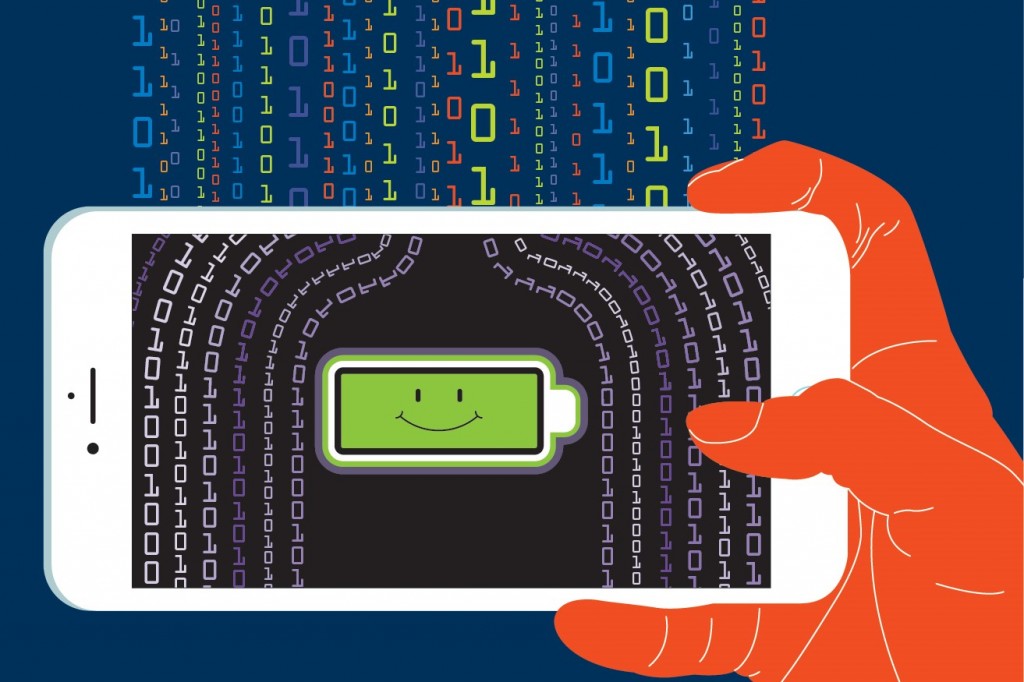It's a common problem––watch a movie on your cellphone and hope the battery makes it to the credits.

George Mason University computer science professor Songqing Chen is working to solve that situation. He's just in time because video streaming over mobile devices is predicted to increase tenfold by 2019. It's enough to make a battery simply give up.
"Streaming traffic has always been there," said Chen, who teaches in the Volgenau School of Engineering. "Now the trend is to shift from the desktop to the smartphone. I see it all the time––students on a class break will pull out their smartphone and play a video clip."
Chen started working in October on a three-year nearly $500,000 grant from the National Science Foundation. He's tackling battery drain on three fronts—how traffic is transmitted, how data is decoded, and how the backlight is used. From a power standpoint, roughly 40 percent is spent on transmission, 20 percent on CPU and processing, and about 40 percent on the display when viewing a typical YouTube video clip today.
"Logically each element is independent but they will be integrated together to help save battery life," Chen said.
When video is transmitted, there's a "gap" of data that's downloaded but not used. Plus, not all of the video needs to be downloaded at once. Video could be downloaded in bursts.
"Sometimes we watch a video for only 5-10 seconds," Chen explained.
Graduate student Mengbai Xiao is working on how best to use the backlight. A smartphone's display is always on during streaming. It can be manually dimmed to save battery life, but users may not be happy with the result because the image becomes blurred.
One battery-saving fix being tested is to boost the display's pixel luminance while dimming the backlight.
"The user doesn't perceive the difference," Chen said.
Xiao has used the approach on nearly 500 randomly selected videos, showing a 50 percent improvement in battery life.
He has some tips for current video streamers.
"Wi-Fi connection is definitely better than 3G/4G, not only for the energy efficiency, but also due to monetary reasons," Xiao said. "Choosing some lower quality version of a video extends your battery life as well. Dimming the screen backlight wisely can save energy effectively."
A version of this story by Michele McDonald was posted on Mason's Newsdesk on Nov. 4, 2015.
